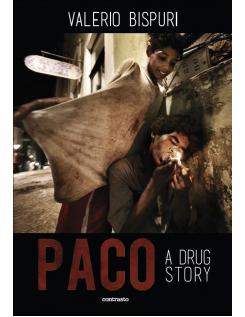
Look inside
|
Paco
Valerio Bispuri
ISBN: 9788869657238
(HB - E)
€
Paco is the result of a long-term project about the life cycle of a new drug. An investigation on its production, trafficking, consumption, addicts and victims. Sold for less than half a dollar per dose, Paco has been called "the poor man's cocaine" and has ravaged the poorest slums of Buenos Aires. Smoked like crack, it has an extremely short effect and can lead to addiction in just as short a time, turning out to be much more addictive than heroin or crack itself. The effect lasts for only five to ten minutes, and it takes only about thirty seconds to act.
Also known as PBC (pasta básica de cocaina, "cocaine base paste"), Paco is the waste product of cocaine preparation and is mixed with hypertoxical chemical substances varying from kerosene, glue, glass powder and even rat poison. It is mainly produced in clandestine laboratories, known as cocinas ("kitchens"), in the Villas, the slums outside Buenos Aires. Some of the submitted pictures are a rare depiction of the Paco kitchens and document the whole process of its production.
Twelve to seventeen-year-old boys living in urban ghettos are among the worst hit by this addiction. This phenomenon creates a young army of "walking dead" that will do anything to get their dose, with devastating human, sanitary and social effects for whole communities. But Paco is becoming a problem in the middle and upper classes too and one of the reasons for its diffusion is of course widespread poverty that followed Argentina's economic crisis of 2001. After the harsh reportage Encerrados (Contrasto, 2015), which led him to visit 74 South American prisons, Bispuri offers here another punctual documentation on a little-known phenomenon, but not for this less alarming. The images are accompanied by three essays, in English and Spanish, by the author, by the writer Marco Lodoli and the journalist César González.
|